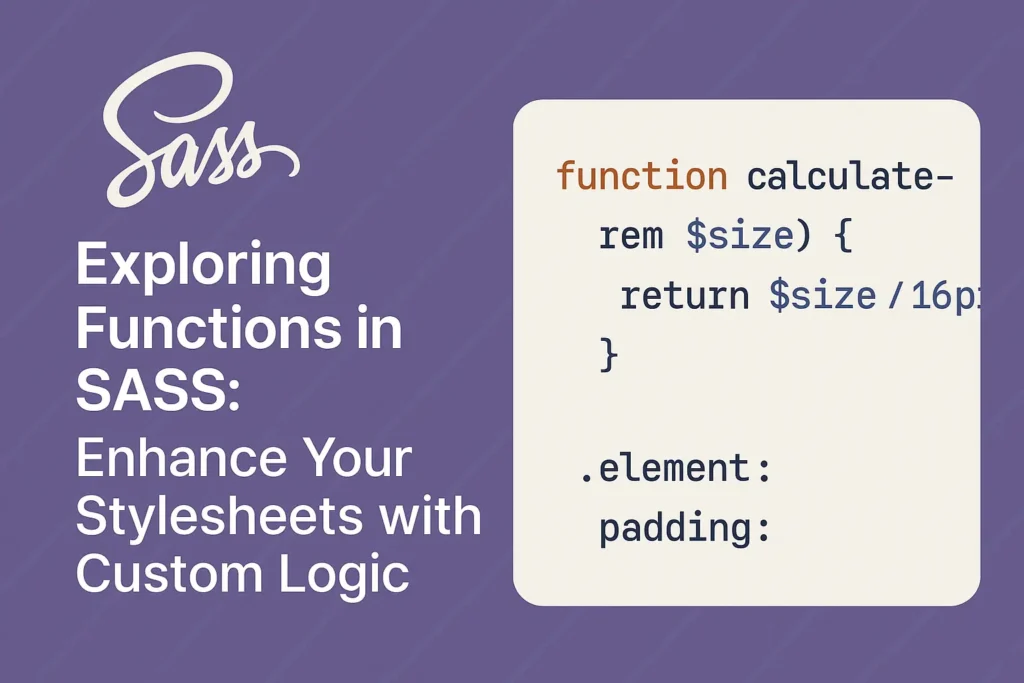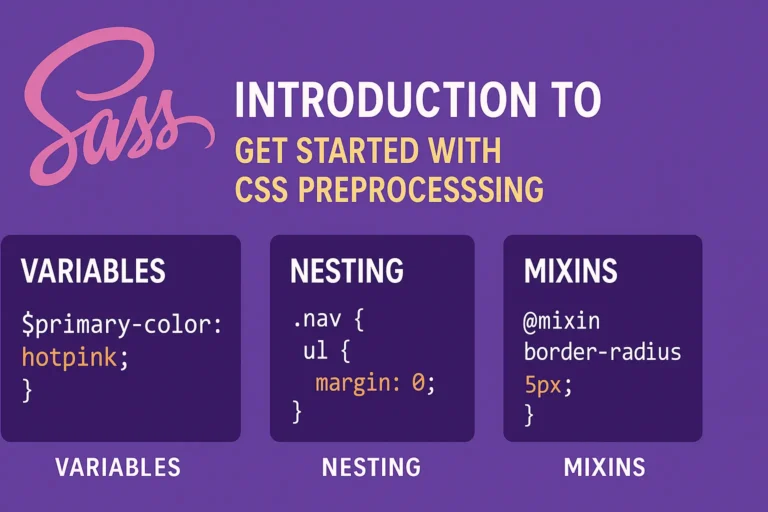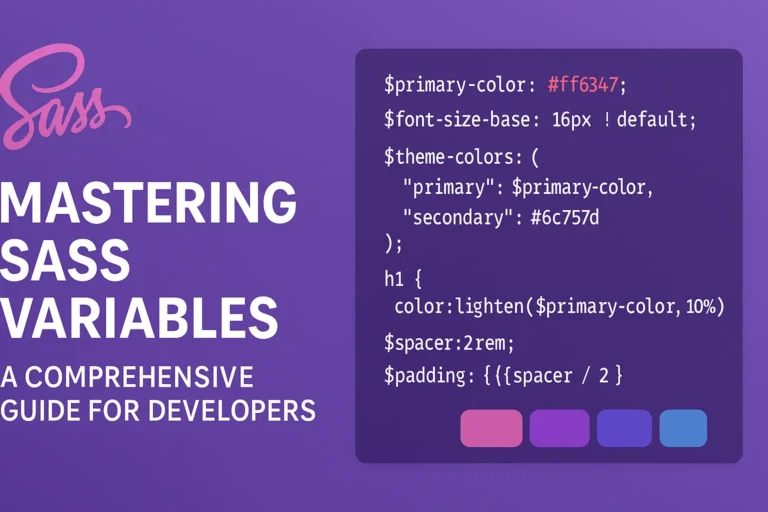Among its many features, SASS offers robust support for functions, enabling developers to write cleaner, more modular stylesheets. In this article, we’ll delve into the world of SASS functions, exploring built-in functions, custom functions, function directives, and best practices.
Built-in Functions
SASS provides a rich set of built-in functions that streamline common tasks, from manipulating colors to performing mathematical operations. Let’s explore a few examples:
lighten() and darken()
$base-color: #3498db;
.lighter-blue {
background-color: lighten($base-color, 20%);
}
.darker-blue {
background-color: darken($base-color, 20%);
}
rgba()
$background-color: #3498db;
$opacity: 0.5;
.transparent-bg {
background-color: rgba($background-color, $opacity);
}
percentage()
$width: 50px;
$total-width: 100px;
.width-percentage {
width: percentage($width / $total-width);
}
Custom Functions
While built-in functions cover many use cases, custom functions allow developers to extend SASS’s capabilities to suit their specific needs. Let’s create a simple custom function to calculate the area of a rectangle:
@function calculate-area($length, $width) {
@return $length * $width;
}
$length: 10px;
$width: 20px;
.rectangle {
area: calculate-area($length, $width);
}
Function Directives
SASS function directives, such as @return, enable functions to output values for use elsewhere in the stylesheet. Consider the following example, where a function calculates the font size based on the device width:
@function calculate-font-size($base-font-size, $viewport-width) {
@return $base-font-size * ($viewport-width / 1000);
}
$base-font-size: 16px;
body {
font-size: calculate-font-size($base-font-size, 1200px);
}
Function Best Practices
To ensure maintainable and efficient code, it’s essential to follow best practices when working with SASS functions:
Keep Functions Modular
Break down complex tasks into smaller, reusable functions. This promotes code reusability and makes your stylesheets easier to maintain.
Optimize Performance
Avoid nesting functions excessively or performing heavy computations within functions, as this can impact performance. Instead, aim for lightweight, efficient functions.
Document Your Functions
Provide clear documentation for custom functions, including descriptions of their purpose, parameters, and return values. This helps other developers understand and use your functions effectively.
Test Thoroughly
Before deploying functions in a production environment, thoroughly test them across different scenarios to ensure they behave as expected and handle edge cases gracefully.
Leverage Function Directives Wisely
Use function directives such as @return judiciously to output values from functions. Overuse of function directives can lead to bloated stylesheets and hinder readability.
Conclusion
Functions are a powerful feature of SASS that enable developers to write cleaner, more modular stylesheets. By leveraging built-in functions, creating custom functions, and following best practices, developers can unlock the full potential of SASS functions in their projects. Whether you’re manipulating colors, performing mathematical calculations, or extending SASS’s capabilities, functions provide a flexible and efficient way to manage styles in your web projects.






